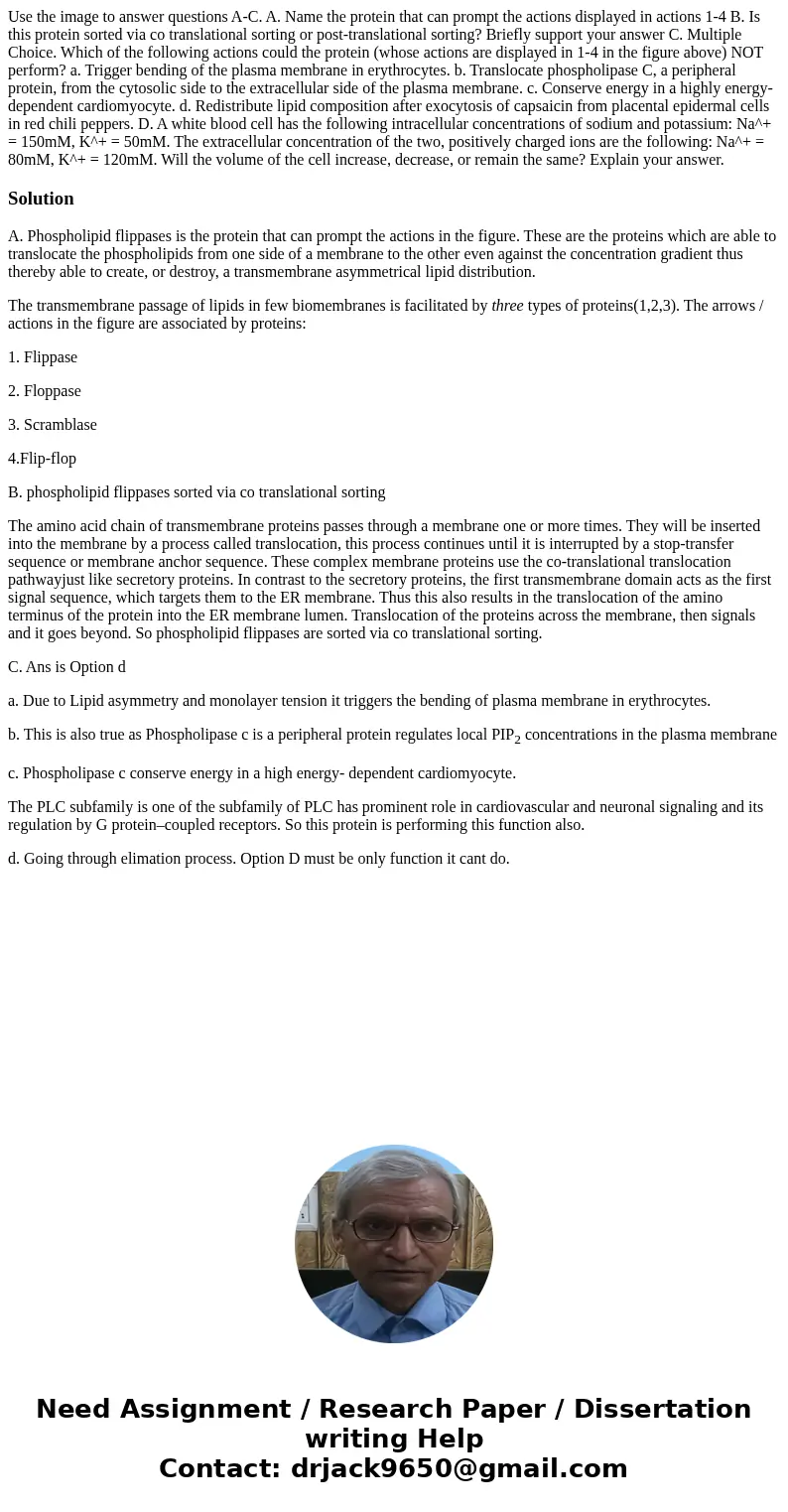Use the image to answer questions AC A Name the protein that
Solution
A. Phospholipid flippases is the protein that can prompt the actions in the figure. These are the proteins which are able to translocate the phospholipids from one side of a membrane to the other even against the concentration gradient thus thereby able to create, or destroy, a transmembrane asymmetrical lipid distribution.
The transmembrane passage of lipids in few biomembranes is facilitated by three types of proteins(1,2,3). The arrows / actions in the figure are associated by proteins:
1. Flippase
2. Floppase
3. Scramblase
4.Flip-flop
B. phospholipid flippases sorted via co translational sorting
The amino acid chain of transmembrane proteins passes through a membrane one or more times. They will be inserted into the membrane by a process called translocation, this process continues until it is interrupted by a stop-transfer sequence or membrane anchor sequence. These complex membrane proteins use the co-translational translocation pathwayjust like secretory proteins. In contrast to the secretory proteins, the first transmembrane domain acts as the first signal sequence, which targets them to the ER membrane. Thus this also results in the translocation of the amino terminus of the protein into the ER membrane lumen. Translocation of the proteins across the membrane, then signals and it goes beyond. So phospholipid flippases are sorted via co translational sorting.
C. Ans is Option d
a. Due to Lipid asymmetry and monolayer tension it triggers the bending of plasma membrane in erythrocytes.
b. This is also true as Phospholipase c is a peripheral protein regulates local PIP2 concentrations in the plasma membrane
c. Phospholipase c conserve energy in a high energy- dependent cardiomyocyte.
The PLC subfamily is one of the subfamily of PLC has prominent role in cardiovascular and neuronal signaling and its regulation by G protein–coupled receptors. So this protein is performing this function also.
d. Going through elimation process. Option D must be only function it cant do.

 Homework Sourse
Homework Sourse